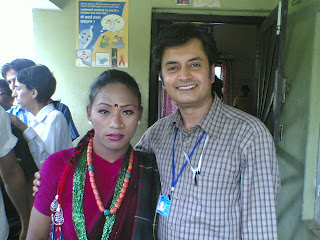Congenital Syphilis Makes a Comeback
In light of a resurgence, clinicians need to remember the clinical features of syphilis in infants.Published in Journal Watch Dermatology May 7, 2010
WHO estimate says, every year, globally, 12 million people get affected by syphilis, 2 million pregnancies get affected with 25% of them end in still-birth and 25% of the newborn are born low birth weight or with serious infection.
It is estimated that more number of children are being affected by congenital syphilis than HIV.
Congenital syphilis is a preventable and treatable disease. This can be eliminated by regularized ante-natal screening of syphilis and timely treatment of the infected pregnant women. The interventions are cost-effective and can be easily managed at primary healthcare level.
Unfortunately, very unfortunately, other than WHO, there is no global level advocacy to sensitize the countries for elimination of congenital syphilis, where, the picture is so completely contrasting in PMTCT programs. Syphilis is lacking the ‘HIV glamour’ in it and continues to stay back in the dark forgotten corner of the ‘neglected’ diseases.
Congenital syphilis is a preventable and treatable disease. This can be eliminated by regularized ante-natal screening of syphilis and timely treatment of the infected pregnant women. The interventions are cost-effective and can be easily managed at primary healthcare level.
Unfortunately, very unfortunately, other than WHO, there is no global level advocacy to sensitize the countries for elimination of congenital syphilis, where, the picture is so completely contrasting in PMTCT programs. Syphilis is lacking the ‘HIV glamour’ in it and continues to stay back in the dark forgotten corner of the ‘neglected’ diseases.
In India
Is anyone listening?
Sugata Mukhopadhyay


